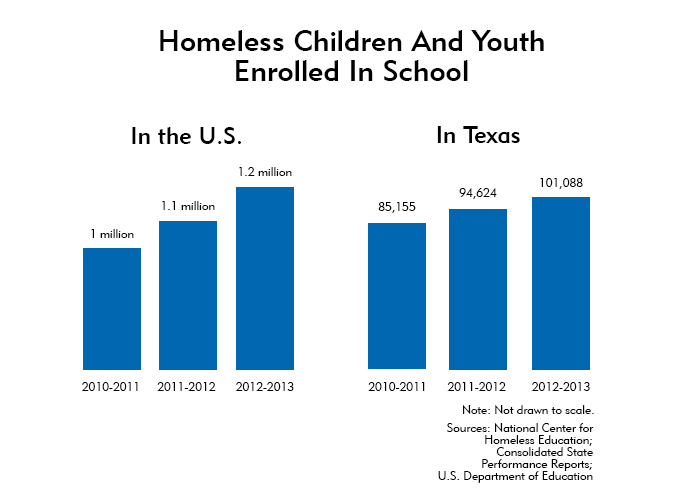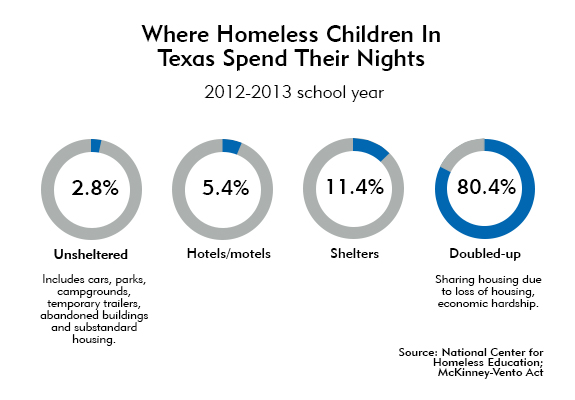 Sylvia Torres eats lunch at McKinney North High School. Photo/Lara Solt
Sylvia Torres eats lunch at McKinney North High School. Photo/Lara Solt
Who Are The Homeless Kids Of Texas?
Learn more about the homeless student population in Texas and across the country.
Defining Homeless Kids
A federal law, the McKinney-Vento Act, requires public schools to educate homeless kids. The act defines homeless children as those who “lack a fixed, regular, and adequate nighttime residence.”
They fall under one of several categories:
- They share housing due to loss of housing or economic hardship. They’re living in motels, hotels, trailer parks or camping grounds. They’re living in emergency or transitional shelters. They’ve been abandoned in hospitals. They’re awaiting foster care placement.
- Their primary nighttime residence is a public or private place “not designed for or ordinarily used as a regular sleeping accommodation for human beings.”
- They’re living in cars, parks, public spaces, abandoned buildings, substandard housing, and bus or train stations.
- They’re migratory children who either are migratory agricultural workers or whose parents or spouses are migratory agricultural workers.
Sources: McKinney-Vento Homeless Assistance Act; U.S. Department of Education
Homeless Student Population Climbing Across Texas And U.S.

Graphic/Molly Evans
‘Homelessness knows no boundaries’
Barbara James, project director with the Texas Homeless Education Office in Austin, says her agency encourages school districts to use code names or acronyms for homeless students to soften the stigma.
“We just don’t refer to a child as being homeless but rather ‘in a situation,’” she says. “That makes it seem much more temporary, and also it doesn’t seem so pejorative toward the child.”
Teaching educators about the signs of homelessness has helped students get out of bad situations. James recalls one Texas district where a teacher had noticed a student missing school often and wearing the same clothes.
It was later discovered that the student was among 17 people sharing a two-bedroom apartment, a situation known as “doubling up.”
“That’s a situation where an astute teacher, having gone to a class on homelessness, was able to make an impact on 17 people,” James says.
Homelessness isn’t limited to big cities. James says rural areas have high poverty rates, and her office comes across many situations where families are living in substandard housing.
James’ office encounters suburban homeless situations as well, usually because a parent has lost a job and is overextended financially.
“Homelessness knows no boundaries,” James says. “It really can happen to anyone.”
–Krystina Martinez/KERA
Listen to Barbara James’ conversation with KERA.
Most Texas Homeless Students Share Housing With Others

Graphic/Molly Evans
Interactive: Where North Texas Homeless Students Attend School
Click on each marking on the map to see how many homeless students were enrolled in North Texas school districts during the 2013-2014 school year.



